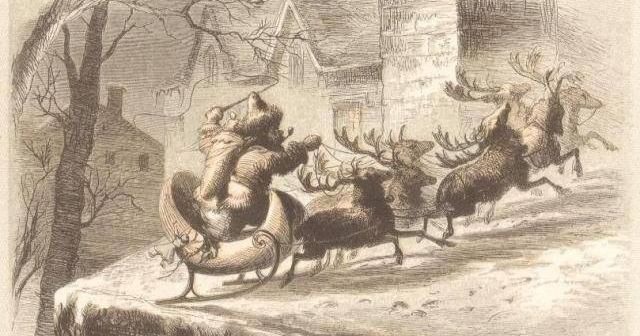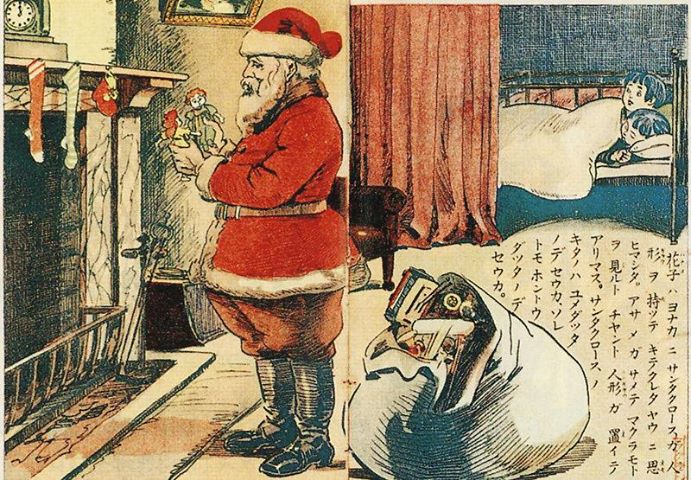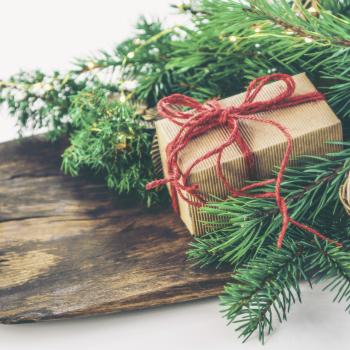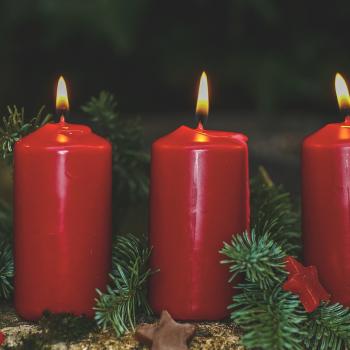The winter solstice holiday is upon us, with its focus on the return of the sun’s light, lengthening days, hope for warmth (eventually), and for some pagans the birth/rebirth of a deity. In my family we have our own celebrations and traditions, which include offering to our house spirits and ritually acknowledging the winter sun as Grian. But we also acknowledge Santa; not the historic one but the modern pop-culture version with his Coca-Cola inspired red suit, jolly demeanor, and Rubenesque figure. For my children I think Santa is the centerpiece of the holiday, outweighing even the fun of the Yule log or baking a cake for the spirits and Grian.

Despite the importance my own family places on Santa I’m always surprised every year as we approach the holidays and I start to see a flurry of anti-Santa sentiment from other pagans. It’s not that everyone is anti-Santa but there’s certainly a contingent that advocates ditching Santa as too rooted in Christianity, or conversely ditching Santa in favor of pagan Gods who may represent older versions of the modern holiday spirit (Odin I’m looking at you). I can understand that I suppose since for many people Santa is inextricable tangled up in a wider culture that is predominantly Christian and he is, ultimately, tied to a Christian holiday today. However for me Santa as he is today has become something more than whatever he began as.
Secular Santa
I may have a different view on this because my own childhood wasn’t a religious one. I think I was in 9 or 10 before I figured out that Christmas was supposed to be celebrating the birthday of Jesus, and I’m not sure at that point I understood who – or what – Jesus was. Growing up, Christmas was the day when Santa came and brought gifts, and the holiday centered on leaving out cookies and milk for him and carrots for his reindeer. My family did have traditions including watching certain movies like A Christmas Story, Miracle on 34th Street, and A White Christmas and eating very specific meals. But there was no religious message or service to attend.
For me the ritual of the holiday was entirely based on leaving out offerings to Santa and hoping to pass that supernatural measure of goodness that would assure presents under the tree. Later on I came to see that ‘goodness’ more as an embodied spirit that I myself could have, to help others and be kind at a time of year when people may need it more than usual, and the rewards became less tangible, less about physical gifts and more about spreading that good feeling, that light and cheer of the season.

Popculture Santa
Raising my children pagan I’ve tried to give them holidays that are both fun for them and also meaningful, and in most ways I haven’t worried about whether they stayed connected to the mainstream view of the closest secular holiday or not. In some cases we compromise, like celebrating both Halloween and Samhain together. But when it comes to the winter solstice, the twelve days of Yule, Santa was incorporated right in along with Grian and Frau Holle. We’ve never worried about making Santa pagan though, rather we’ve focused on the modern iteration of Santa, the secular one. The one born from Clement Clark Moore’s poem ‘Twas the Night Before Christmas‘.
Our Santa is the one who has been shaped by modern belief and popculture and who exists across chasms of belief as a shared icon of American culture. In short, our Santa is the egregore that has been built over the last hundred years and is fed today by everyone who still believes in him – by all the kids who watch NORAD to see the Santa tracker, everyone who writes a list to Santa hoping they will get even one thing they are asking for, and everyone who searches the sky looking for a flying reindeer pulled sleigh.
The Spirit of Santa

Santa is a spirit with many guises and many names. Some of those guises and names are definitely rooted in pagan spirits and Gods, but some are modern beings created by mass belief. This modern Santa is just as real, and for many children just as important. Even as an adult I still find power in Santa’s message. People who are stingy, mean, and cold-hearted are punished in some way, while the generous, kind, and good hearted are rewarded. Santa is treated like other spirits: usually offerings are made, either to Santa directly or of food to his reindeer. In return Santa brings gifts and spreads holiday spirit, a feeling of generosity and joy that can live in all our hearts.
Santa is the spirit of the season: he is the joy of the lights and the decorated tree, the warm feeling of giving and receiving, the magic of believing in the goodness of people. As long as any of us believe in Santa he will exist. As long as we believe that it is possible for people to give without looking for reward he will exist. As long as there is some part of us that still feels joy at seeing lights dancing in the darkness, and the hope that is promised by a new year, he will exist. I cannot imagine a world without Santa, and I believe our world would be a poorer place without his yearly visit.
We do acknowledge the pagan roots of Santa, and also the Christian influence on his mythology. But for my family Santa is more than just the sum of his mythology, he is a modern spirit that has been woven together from diverse beliefs and exists now as an individual being. He is as real and alive in this current incarnation as any other spirit and is both a uniquely American spirit as well as a global one. And so this year, like every previous one, we will leave out his offerings – and offerings for his reindeer – and we will listen for the cheerful sound of bells in the night air. We’ll go to sleep hoping that the Spirit of the Season will visit us, not with physical gifts but with good cheer and hope. And with both of those things we’ll move forward into a new secular year.













